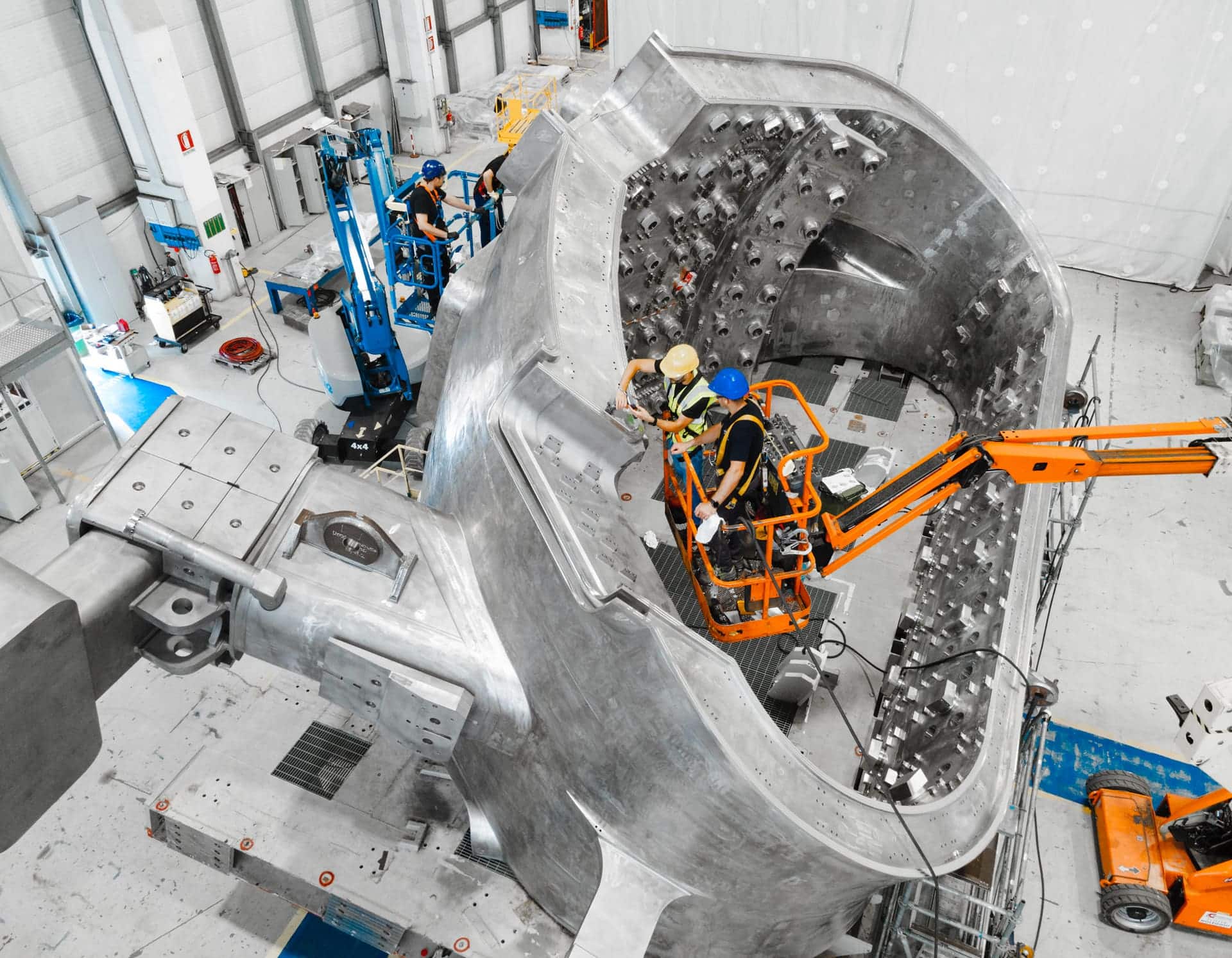The ITER project is advancing its ambitious goal of generating clean, carbon-free energy, backed by AI tools and technological collaboration with Microsoft.
In the heart of French Provence, surrounded by pines and Mediterranean shrubs, the largest scientific experiment of our era is being constructed: the ITER nuclear fusion reactor. The objective is as ambitious as it is fascinating: to recreate on Earth the energy that powers the sun. And to achieve this, artificial intelligence (AI) is playing a key role.
With over 2,000 scientists and technicians from 30 countries working together, ITER (International Thermonuclear Experimental Reactor) aims to demonstrate that fusion is a viable source of energy on a large scale, safe, and carbon-free. Microsoft has become a strategic ally in this colossal challenge.
AI and Microsoft tools to tackle an unprecedented challenge
The collaboration with Microsoft is accelerating the development of this “jewel of engineering,” as its leaders describe it. Tools like Microsoft 365 Copilot, Azure OpenAI Service, Visual Studio, and GitHub allow for the management of over a million technical documents, improving software quality and optimizing assembly and maintenance processes.
Alain Becoulet, Deputy Director General of ITER, sums it up with an eloquent metaphor: “We’re going to drive a Ferrari, but today we only have bicycles to train on.” The comparison speaks to the level of precision and complexity of this project, which requires assembling more than a million pieces with minimal tolerances. “It’s like building a Swiss watch the size of a nuclear power plant,” he points out.
One of the milestones of the collaboration has been the development of a chatbot using Azure OpenAI that facilitates access to over 20 years of accumulated knowledge. This system allows for searching not only for documents but also for specific answers within them, even interpreting the meaning of complex technical concepts.
Nuclear fusion: extreme precision and advanced manufacturing
One of the most crucial components is the vacuum vessel, a doughnut-shaped container that will house plasma at temperatures of up to 150 million degrees Celsius, ten times hotter than the sun’s core. Spanish engineer María Ortiz De Zúñiga, from Fusion for Energy (F4E), leads the computer-aided design and technical data management area in the manufacturing of this component.
“AI is a force multiplier,” she states. Thanks to Visual Studio Code and machine learning algorithms, her team accurately analyzes welds using ultrasound scans, detecting defects imperceptible to the human eye. This automation saves thousands of hours of work and ensures the quality demanded by a nuclear system.
Europe manufactures five of the nine sectors of the vessel; South Korea produces the other four. Russia and India contribute additional components. Technical complexity and international cooperation are hallmarks of the ITER project.
From research to operation: AI and advanced computing
Artificial intelligence also plays an essential role in preparing for the reactor’s operation. Jean-Daniel Delaplagne, IT manager at ITER, highlights how tools like Microsoft 365 Copilot are already being used for administrative tasks, CV management, purchasing, and even drafting safety protocols.
Additionally, scientists are training models to interpret the results of complex physical simulations. Alberto Loarte, one of the physicists responsible for defining plasma behavior, notes that AI will enable more accurate predictions and provide insights into how materials will respond under extreme conditions. “AI allows us to accelerate simulation and analysis, and that can make a difference,” he asserts.
The long-term goal is to have real-time control systems that can stabilize plasma behavior—prone to behave like the sun, with eruptions and magnetic flows—and maintain continuous and safe reactor operation.
ITER: a global effort to solve the energy crisis
Set to start operation in 2033, ITER will not generate energy for the electrical grid; rather, its mission is to demonstrate the technical viability of fusion. If successful, it will pave the way for future commercial plants capable of producing clean, abundant energy without long-lived radioactive waste.
In Ortiz De Zúñiga’s words, “engineering is exciting, but manufacturing a component that will be part of ITER makes you feel like you are contributing to solving the planet’s energy crisis.”
With the support of AI and technology allies like Microsoft, humanity is one step closer to harnessing the energy of the stars to fuel its future.
Image and source: Microsoft News

